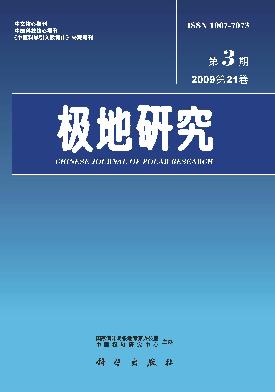We describe a radio echo sounding (RES) survey for the determination of ice thickness, subglacial topography and ice volume of Glacier No.1, in Tien Shan, China, using ground penetrating radar (GPR). Radar data were collected with 100 MHz antenna that were spaced at 4 m with a step size of 8 m. As our study shows, the GPR radar survey method works well on alpine glaciers in low latitude, high altitude China. Very clear bedrock echoes were observed in radar images. The images produced from GPR clearly show the continuity of bedrock echoes. The undulation of the bedrock surface, indicates that GPR radar survey provides for fundamental data on glacier thickness, subice topography and ice volumes, which can contribute new knowledge and better understanding of glacier dynamics, glacier fluctuation and climate change, glacial erosion processes as well as providing estimates of glacier water reserves. Radar results show that the maximum ice thickness of Glacier No.1 is 133m, the average thickness of east branch is 58.77m and that of west branch is 44.84m. And ice thickness along east branch main ice flow line of Glacier No.1 averages at 85.3m and ice thickness along west branch main ice flow line of Glacier No.1 averages at 66.5m. Based on the map of ice thickness, we know the thickest part of the glacier lies near the main flow line in the central area of the glacier. Ice volume calculations based on radar data provide support to the studies of glacier fluctuations and estimation of the glacial water reserves. For Glacier No.1, in Tien Shan, the ice volume of east branch is 51.87×10 6m 3, which of west branch 20.21×10 6m 3. Subglacial topography features revealed by glacier radar images show that bedrock is more undulating than the glacier surface topography, indicating that the amplitude of the bedrock undulation decreases with increasing distance above the bedrock. The surface relief does not vary with the of the bedrock on Glacier No.1. The morphologies of glacier valley cross sections differ greatly in different parts of the glacier, which helps us to understand the impacts of glacier valley cross sections on glacier motion.

